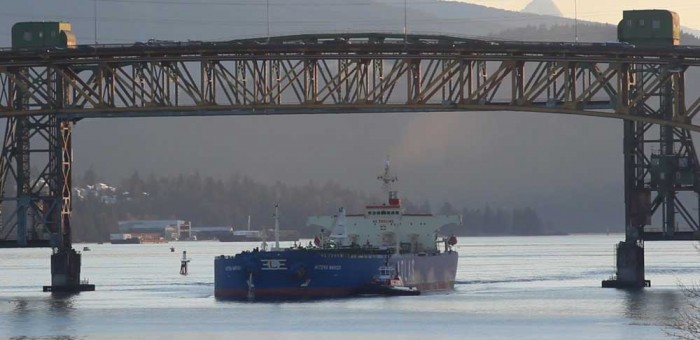Determining the Scope of Trans Mountain’s Pipeline Consultations
This post is part of an ongoing series in which MLA Andrew Weaver will be sharing key information from inside the National Energy Board hearings on Kinder Morgan’s Trans Mountain pipeline proposal.
Consulting with British Columbians
One of the biggest stumbling blocks for Kinder Morgan’s Trans Mountain Pipeline is the question of whether there has been adequate consultation with British Columbians and with First Nations. Ultimately, this question is so critical that in many cases, it will have to be decided by the courts.
Indeed, Enbridge’s Northern Gateway pipeline proposal is already facing a number of court challenges from BC First Nations. They argue that they were not adequately consulted. They further argue that the company did not fully consider their opinions when they were consulted.
Trans Mountain is already caught up in similar legal action from the Tsleil-Waututh First Nation. The Tsleil-Waututh position is that the Federal Government has failed to consult with them about the pipeline proposal.
British Columbians have been clear that for any company to build an oil pipeline, it must first earn a social license for the proposed project. And earning that social license starts with consultation. I therefore spent quite a bit of time unpacking Trans Mountain’s consultation efforts in my first round of questions to the company.
Guidelines for Community Engagement
As a part of their consultation process, Trans Mountain defined guidelines for community engagement. These guidelines were generally referred to as the “scope” of the engagement process. They set boundaries and limitations for what was to be done during consultation.
Here is the scope of engagement for the project:
- Determining the scope of the environmental and socio-economic assessment (ESA);
- Identifying potential mitigation measures to reduce environmental and socio-economic effects;
- Identifying potential benefits associated with the Project;
- Routing alternatives where it is not practical to follow the existing Trans Mountain Pipeline System right-of-way.
Finally there was also a guide to future consultations that stated:
“Future consultation plans will include providing communities with information on pipeline integrity, safety and emergency response; a topic that has been raised in many communities”.
Breaking down the Guidelines
The first thing that hits you after reading this, is that all the guidelines for engagement assume that the project will be built, regardless of what people say. They simply ask about how the project should be built, not if it should be built. Why didn’t Trans Mountain ever ask people if they thought the pipeline should be built in the first place? Is that not a fair question?
When I asked Trans Mountain about this in my first round of questions, they replied by saying that the scope of their engagement does not limit them from going further to consider other issues.
While that sounds great in theory, in practice it is very problematic.
The whole reason scope exists is to provide limitations on what can be considered. For example, Trans Mountain refuses to answer questions about climate change and the Alberta tar sands during the hearing process. They say such questions are outside the scope.
The fact is, you can’t have it both ways. Trans Mountain cannot continue to refuse to answer questions because they are ‘out of scope’, but then claim that they can consider anything, regardless of whether or not it is ‘in scope’.
I think you will agree that it’s critical that questions about what falls inside or outside of scope are adequately addressed now, in order to properly evaluate how consultation was conducted.
An inclusive and transparent engagement process that is accessible to all British Columbians is the only way large industrial projects are going to be able to proceed in British Columbia.
Comments are closed.




